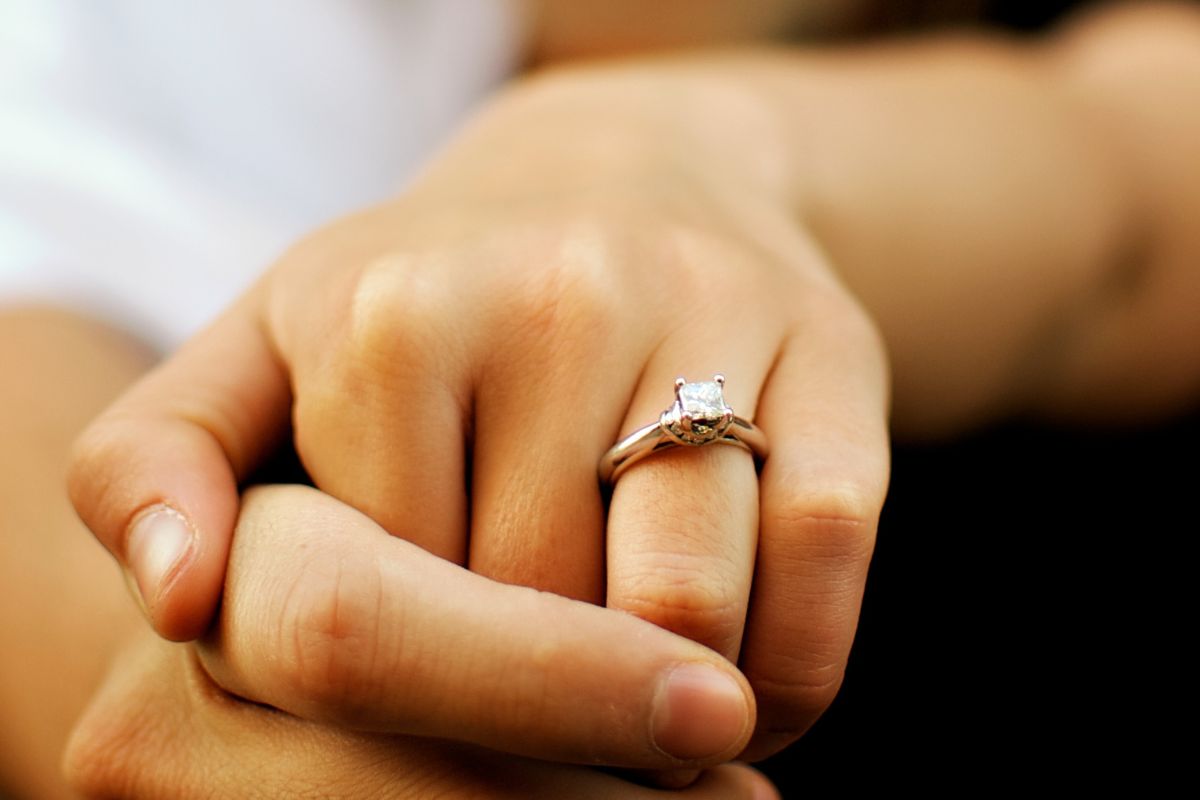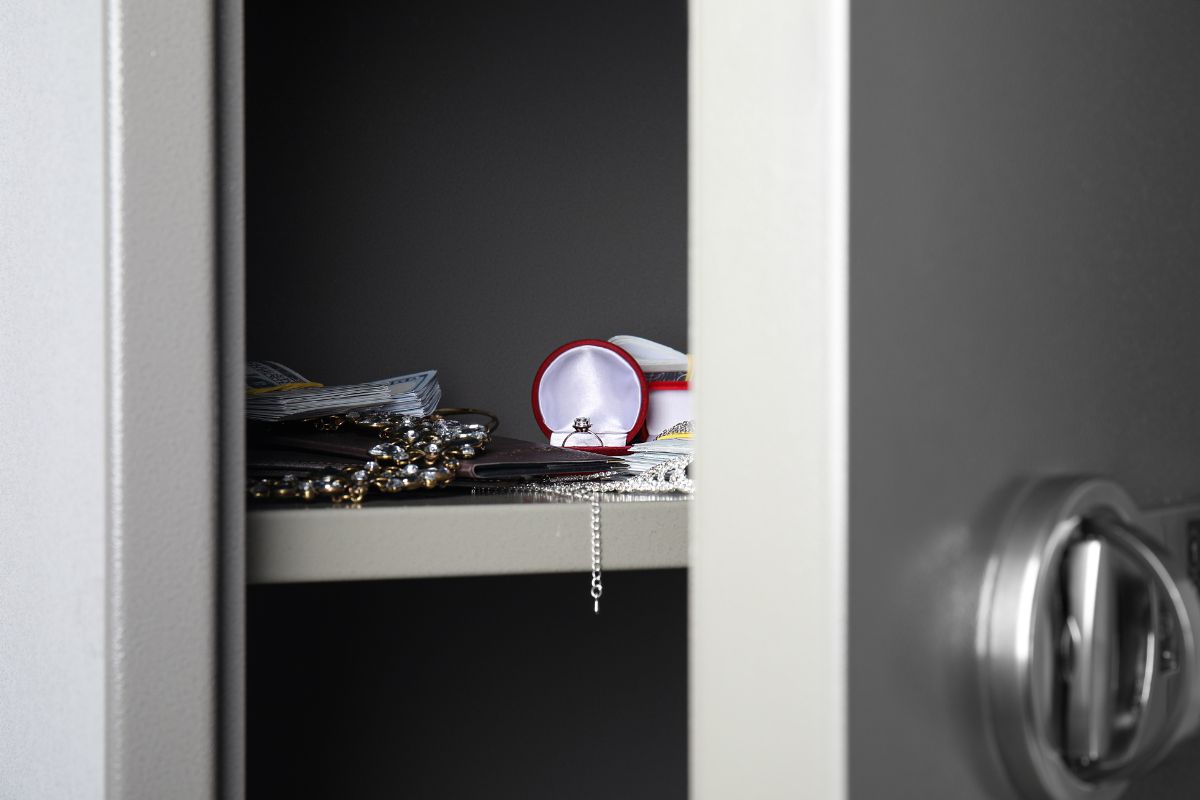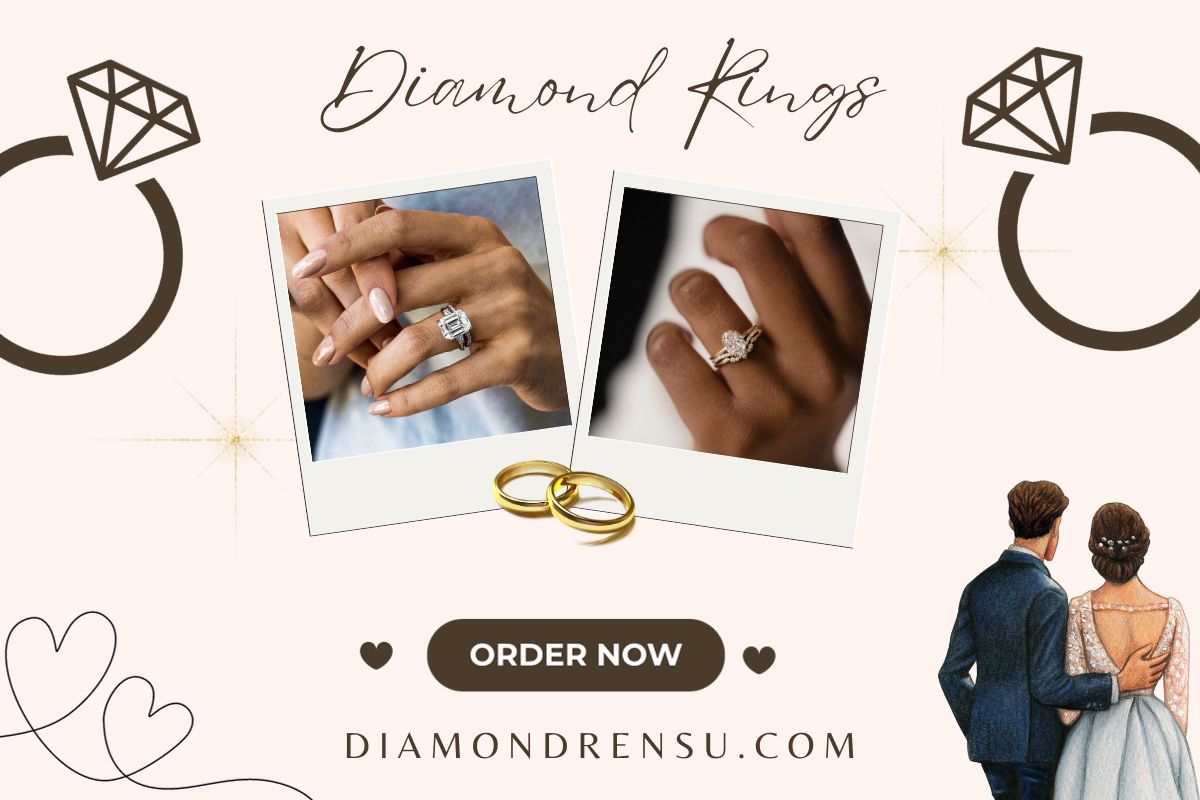
How to Insure Your Engagement Ring: A Practical Guide
Insuring an engagement ring is a practical step that I always recommend to safeguard against the emotional and financial loss that can result from theft, damage, or loss of the ring. An engagement ring is not only a symbol of commitment but often a significant financial investment. Understanding how to properly insure an engagement ring gives me peace of mind that the value of the ring is protected.
Table Of Contents
- Understanding Engagement Ring Insurance
- Evaluating Your Engagement Ring
- Financial Considerations
- The Process of Insuring Your Engagement Ring
- Coverage Details and Limitations
- Additional Considerations and Best Practices
- Safeguarding Your Investment
- Selecting Insurance Providers
- Final Steps After Insuring
- Frequently Asked Questions
When considering insurance, I'm aware that there are two main options: adding a rider to my homeowner's or renter's insurance policy, or obtaining a separate, specialized jewelry insurance policy. Both options have their merits, and I look at the specific aspects of coverage, such as replacement cost, actual cash value, and potential deductibles. It's important to have a clear understanding of the coverage details to ensure the ring is fully protected.
One critical step is having the engagement ring appraised by a certified gemologist. I make sure that the appraisal reflects the current market value and includes a detailed description of the ring, including the cut, carat, clarity, and color of the diamonds or gemstones, as well as the metal type. This information is crucial when documenting the ring's value for the insurance company and determining the right amount of coverage to obtain.
Understanding Engagement Ring Insurance
When I consider protecting my valuable assets, insuring my engagement ring offers peace of mind. It is crucial to understand the intricacies of engagement ring insurance to ensure adequate coverage.
Importance of Engagement Ring Insurance
Engagement ring insurance is essential for safeguarding my investment in a significant personal property item. Accidents, theft, and damage can occur at any time, and having insurance provides a safety net that helps to financially protect this treasured possession. By choosing the right jewelry insurance, I can have the assurance that my ring is covered against potential losses.
Types of Engagement Ring Insurance Policies
| Policy Type | Description |
|---|---|
| Homeowner's Insurance Rider | An add-on to your homeowner's insurance policy covering specific high-value items like engagement rings. |
| Renter's Insurance Rider | Similar to a homeowner's insurance rider, but for renters, providing coverage for personal belongings including engagement rings. |
| Jewelry Insurance Policy | A separate insurance policy specifically tailored for jewelry, offering comprehensive coverage for loss, theft, damage, and more. |
| Valuable Items Policy | Provides coverage for valuable items beyond jewelry, such as artwork, antiques, and electronics, often including engagement rings. |
| Personal Articles Floater | Similar to a valuable items policy, but offers more flexible coverage options and higher coverage limits for specific items like engagement rings. |
There are primarily two types of engagement ring insurance policies to choose from:
- Standalone Jewelry Insurance Policy: This policy is designed specifically for jewelry items. It ensures I get specialized coverage that may not be available under more general policies.
- Extension of Homeowners or Renters Insurance: This is where I can add coverage for my engagement ring to my existing homeowner's or renter's insurance policy through a personal property extension.
I must compare both options to determine which provides the most comprehensive coverage for my engagement ring.
Understanding Policy Coverage
When I dive into the details of my engagement ring insurance policy, I focus on a few key aspects:
- Coverage Limit: I must ensure that the coverage limit reflects the value of my engagement ring and accounts for potential appreciation over time.
- Deductible: It's important to know my policy's deductible, meaning the amount I'd pay out-of-pocket before insurance kicks in during a claim.
- Inclusions & Exclusions: I diligently review what scenarios are included and excluded from coverage. A good engagement ring policy should cover loss, theft, damage, and potentially disappearance.
- Claims Process: Understanding the claims process prepares me to act swiftly should I ever need to report a loss or damage to my insurer.
Being well-informed about engagement ring insurance means I am better equipped to make decisions that ensure my engagement ring is covered to my satisfaction.
Evaluating Your Engagement Ring

Before insuring your engagement ring, it's essential to understand its value and characteristics. This evaluation forms the bedrock of your insurance policy, ensuring you're adequately covered.
The Role of Appraisals in Insurance
An appraisal is a must for insurance purposes as it estimates your engagement ring's value. I recommend obtaining a detailed appraisal from a certified gemologist. This document should describe all qualitative and quantitative attributes of your ring, including the gemstone's 4 Cs - cut, color, clarity, and carat. Insurers rely on the appraised value to determine your coverage options and premiums. Keep in mind that the cost of this appraisal is typically your responsibility, and it may need updating every few years to reflect market changes.
Grading Report and Its Significance
A grading report, often issued by reputable organizations like the Gemological Institute of America (GIA), is crucial for diamonds and other precious stones. As an intrinsic part of the evaluation process, this report provides a meticulous analysis of your diamond's characteristics. While not an appraisal, the grading report augments your insurance documentation by specifying your gemstone's grade, which reaffirms its cost and authenticity. Ensure you have a diamond certificate from GIA or similar entities, as it's recognized industry-wide and bolsters your ring’s appraised value.
Financial Considerations
When insuring my engagement ring, I'm mindful of both the overall cost and the specific details of the policy. Understanding them ensures that I make a well-informed decision.n>
Determining the Cost of Insurance
I start by getting quotes to understand the engagement ring insurance cost. The cost is generally a small percentage of the ring's value. For instance, if my ring is valued at $5,000, the annual insurance might range from $50 to $100 depending on various factors.
Factors Affecting Premiums
Several factors influence the premium I'll pay for my ring's insurance:
- Appraised value: Insurance costs rise in tandem with the value of the ring.
- Location: Where I live can affect risk and, subsequently, the premium.
- Security measures: Having a safe or a security system may qualify me for discounts.
- Claims history: If I have a history of filing claims, this might increase my premium.
Understanding Deductibles
A deductible is the out-of-pocket expense I'll need to pay before the insurance kicks in. Opting for a higher deductible can lower my insurance costs, but it means I'll pay more if I file a claim. I carefully compare plan costs to find the right balance between deductible and premium. It's similar to solving a puzzle where finding the best fit is crucial to protecting my investment with minimal financial impact.
The Process of Insuring Your Engagement Ring
| Step | Description |
|---|---|
| 1. Appraisal | Have your engagement ring appraised by a certified gemologist to determine its value accurately. |
| 2. Documentation | Keep all documentation related to your ring, including receipts, certificates, and the appraisal report. |
| 3. Coverage Options | Research insurance options and understand coverage details, including replacement cost, deductibles, and exclusions. |
| 4. Choosing Insurer | Select an insurer with experience in jewelry insurance, good reputation, and favorable customer reviews. |
| 5. Review Policy | Review the insurance policy carefully before purchasing, ensuring it meets your coverage needs and preferences. |
How to Select the Right Insurer for Your Engagement Ring
| Criteria | Description |
|---|---|
| Experience | Choose an insurer with extensive experience in providing jewelry insurance. |
| Reputation | Research the insurer's reputation, including their financial stability and track record of claims handling. |
| Customer Reviews | Read customer reviews and testimonials to gauge satisfaction levels and customer service quality. |
| Coverage Options | Ensure the insurer offers coverage options that align with your needs, including coverage for loss, theft, damage, and worldwide travel. |
| Premiums | Compare premiums from different insurers to find a balance between affordability and coverage. |
When I first looked into insuring my engagement ring, I knew I wanted comprehensive coverage from a reputable company. I focused on understanding the specifics of the application process, what documentation was required, and how to choose the right insurer.
Selecting the Right Insurer
I started by comparing quotes from several insurance companies well-known for insuring jewelry such as Jewelers Mutual Insurance Group, Briteco, Lavalier, Chubb, and GemShield. I evaluated each insurer based on their coverage options, customer reviews, and premium rates. Comparing their policies was key to find the one that best matched my needs.
- Jewelers Mutual Group: known for specialized jewelry insurance
- Briteco: offers instant online quotes and replacement coverage
- Lavalier: personal jewelry insurers with a broad coverage
- Chubb: high-value jewelry insurance with worldwide protection
- GemShield: reliable insurance platform with comprehensive options
Applying for Engagement Ring Insurance
Once I narrowed down my options, I delved into the application process. The application typically required personal information, details about the ring including the appraisal value, and sometimes my jewelry-wearing habits. Most insurers provided an online application form, making the process quite straightforward.
- Application Details:
- Personal information
- Jewelry details
- Appraisal value
Documenting Your Engagement Ring
Finally, the insurers asked for detailed documentation of my engagement ring. This included a recent appraisal, which covered the replacement value, and clear photos of my ring from multiple angles. Keeping these documents organized was crucial for the insurance process and potential future claims.
- Required Documents:
- Recent appraisal
- Photos (top view, side view, setting)
By following these specific steps, I ensured that my engagement ring was adequately protected and that I had peace of mind knowing that I had selected the right insurance cover.
Coverage Details and Limitations
Comprehensive Coverage
Protects against theft, loss, damage, and mysterious disappearance.
Policy Limitations
Maximum coverage amount and deductible may apply.
Additional Coverage
Options for extending coverage to include specific scenarios like international travel.
Exclusions
Some policies may not cover wear and tear, manufacturing defects, or intentional damage.
When insuring my engagement ring, I understand that it's crucial to be aware of what the insurance policy covers and what it excludes. The fine print often holds essential details about coverage limitations and exclusions that could affect my claim.
Understanding Coverage Exclusions
Coverage for my engagement ring may not be all-encompassing. Typically, exclusions include circumstances such as intentional loss or damage or deterioration due to normal wear. Pre-existing damage is also often excluded, as insurers cover unforeseen events retrospectively.
- Theft and Mysterious Disappearance: If my ring is stolen or goes missing without explanation, coverage should kick in up to the policy's coverage limits.
- Accidental Breakage and Natural Disasters: These are usually included in a comprehensive policy, safeguarding against sudden and unexpected damage.
However, if I voluntarily part with my ring say, I loan it to someone and it's not returned this may not be covered.
Exclusions:
- Intentional loss or damage: Not covered
- Normal wear and tear: Excluded
- Pre-existing damage: Excluded
- Voluntary parting: Typically not covered
Conditions for Repair or Replacement
In the event of loss, damage, or theft, the terms of repair or replacement are pivotal. I should understand the coverage limits, which define the maximum amount the insurance company will pay.
- Repair: For minor damage, the insurer may cover the cost of repair, subject to the policy limit. If the cost exceeds the limit, I may need to pay the difference.
- Replacement: If my ring is lost or damaged beyond repair, the policy may provide a replacement ring up to the coverage limit. I should check if the policy requires me to use specific jewelers or if I have the freedom to choose.
Conditions
- Repair: Up to the coverage limit; may use approved service providers.
- Replacement: Replacement up to the coverage limit; could be restricted to certain vendors.
I must bear in mind that every policy has its own coverage limits and conditions, and it is essential to review these carefully to ensure my engagement ring is adequately protected.
Additional Considerations and Best Practices

When insuring your engagement ring, it's crucial to consider the ring's carat weight, cut, color, clarity, and shape, as these factors influence both the engagement ring value and the coverage limit.
Choosing Coverage Limits
I always advise paying close attention to the coverage limit of an insurance policy for an engagement ring. This limit should align with the ring's appraised value, which is affected by its carat weight, cut, color, clarity, and shape. For instance if I have a 1-carat diamond ring with high clarity and an excellent cut, it's important that my coverage limit is sufficient enough to cover its full value, accounting for the potential increase in value over time.
Comparing Homeowners and Renters Insurance Options
When it comes to insuring an engagement ring, both homeowners insurance and renters insurance typically offer some level of coverage for personal items. However, I find that a specialized floater or engagement ring policy might be necessary for comprehensive protection. This is particularly true for rings that are of high value or if the risk of the ring being stolen or damaged is high. It's imperative for me to compare the specifics of each policy, noting differences in deductibles, premiums, and whether the policy covers the full replacement cost.
- Homeowner's Insurance: May cover the engagement ring to a certain extent, but typically has a lower coverage limit for jewelry theft or loss.
- Renter's Insurance: Similar to homeowner's insurance, but for renters. I often recommend adding a floater to increase coverage for high-value items like an engagement ring.
- Engagement Ring Policy: A specialized policy can often provide more expansive coverage for my engagement ring, including circumstances like accidental loss.
It's my responsibility to read the fine print and understand the terms of coverage, ensuring that my precious investment is protected to the fullest extent possible.
Safeguarding Your Investment

When I invested in an engagement ring, I understood it was not just a symbol of love, but also a significant financial commitment. To protect this investment, I took measures to ensure both its physical safety and financial protection.
Storing and Protecting Your Engagement Ring
I make it a point to store my engagement ring securely when I'm not wearing it. For maximum security, I use a safe deposit box at my local bank vault. This not only gives me peace of mind but also provides protection against loss, theft, or robbery. When the ring is at home, I keep it in a small, fireproof safe that is out of sight. It’s crucial to choose a location that is both secure and consistent, to avoid the ring being lost or stolen.
- Safe Locations:
- Safe deposit box at bank
- Fireproof safe at home
- Protection Measures:
- Consistent storage location
- Limited access to maintain security
Regular Updating of Insurance Information
I also maintain a comprehensive insurance policy specific to fine jewelry, which serves as an insurance rider on my homeowner's insurance. It's essential to schedule an appointment with my insurance provider annually to update my policy, ensuring it reflects the quantity of diamonds, types of metal, and the carat weight of other stones. This way, if my ring were ever to be lost or stolen, I would be covered for a replace or repair situation. To choose the best jewelry insurance companies, I conducted thorough research and compared their comprehensive coverage options. Regularly updating my insurance information guarantees that my investment is financially protected under all circumstances.
- Insurance Details to Update:
- Quantity of diamonds
- Types of metals
- Carat weight of other stones
- Insurance Actions:
- Annual policy review
- Ensuring accurate coverage for replace or repair
Selecting Insurance Providers

When insuring an engagement ring, it’s crucial to choose the right insurance provider. A provider's reputation and the service they offer are central to ensuring the adequate protection of your valuable piece. Here's how I approach the selection process:
Evaluating Insurer Reputation and Service
I begin by researching the background and stability of the insurer. Established companies like Jewelers Mutual Group and Chubb have been providing jewelry insurance for years, giving them a certain caliber of trustworthiness. I look for their financial strength, which can be a strong indicator of their ability to pay claims. Additionally, the scope and flexibility of their policy offerings whether they cover theft, accidental loss, or damage play a significant role in my decision-making process.
- Jewelers Mutual: Offers comprehensive coverage including loss, theft, and damage.
- Chubb: Known for their high-value item coverage and agreed value policies.
- Briteco: Provides quick online appraisals and clear policy details.
Read Reviews and Testimonials
Reviews and testimonials are an excellent way to gauge previous customers' experiences with the insurance provider. For instance, Lavalier and GemShield often fare well in customer reviews, which highlight the customer service quality and claim satisfaction. When exploring reviews, I particularly look for comments on:
- Claim process: Is it straightforward and customer-friendly?
- Customer support: Are they responsive and knowledgeable?
Here are some specific platforms I check for reviews:
- Better Business Bureau (BBB): For general ratings and customer feedback.
- Trustpilot: For independent customer reviews and ratings.
By systematically evaluating each provider's reputation and service offerings as well as reading genuine customer reviews, I ensure that my engagement ring is in safe hands. Remember, the right jewelry insurer for you should not only cover your ring's value but also offer peace of mind with their service quality.
Final Steps After Insuring
Once I've insured my engagement ring, it's crucial to manage and maintain the policy properly to ensure ongoing protection. Regular check-ups on the policy will provide me with peace of mind, knowing my ring is covered against theft, damage, or other unforeseen circumstances.
Ensuring Adequate Coverage Over Time
I understand that the value of my engagement ring may change over time due to factors like market changes or upgrades to the ring itself. To ensure that my coverage reflects its current value, I will have my engagement ring appraised periodically, ideally every two to five years. Any significant changes in its value will necessitate an update to my insurance policy to maintain adequate coverage. This is especially important in cases of natural disasters or accidental breakage, where the cost to repair may be affected by the current valuation.
Key actions to maintain adequate coverage:
- Schedule regular appraisals: Set reminders to have my engagement ring appraised at consistent intervals.
- Review policy annually: Check my policy details yearly to confirm coverage limits and make adjustments if my situation has changed.
Acting in Case of Theft or Damage
In the unfortunate event that my engagement ring is stolen, lost, or damaged, I need to act promptly. A clear understanding of my insurance policy's claims process is imperative. For theft or robbery, a police report must be filed immediately, which is a common requirement for insurance claims. For instances of disappearance or accidental breakage, I must contact my insurance provider as soon as possible to start the claim.
Steps to follow in case of theft or damage:
- File a police report: Necessary for claims on stolen items.
- Contact insurer promptly: Initiate the claims process without delay.
- Document the incident: Provide a detailed account and any evidence of the theft or damage.
By taking these proactive steps, I can rest assured that my standalone policy for insuring an engagement ring adequately protects this significant investment.
Frequently Asked Questions
When considering insuring your engagement ring, familiarize yourself with the best options available, understand the factors that affect insurance costs, and learn the specifics of policy coverage. Below I've addressed typical questions to guide you through securing protection for your cherished piece of jewelry.
What are the best options for insuring an engagement ring?
The most reliable options for insuring an engagement ring include obtaining a policy through a company that specializes in jewelry insurance or adding a rider to your homeowner's or renter's insurance policy specifically for the ring.
What factors determine the cost of insuring an engagement ring?
Insuring an engagement ring's cost depends on various factors such as the ring's appraised value, the deductible selected, where you live (as some areas have higher theft rates than others), and the level of coverage you choose, which may include loss, theft, damage, and disappearance.
Can an engagement ring be added to an existing insurance policy?
Yes, you have the option to add your engagement ring to an existing policy. Typically, this can be done through a rider or a floater, which extends coverage beyond what your standard policy offers, ensuring your engagement ring is fully protected.
Are engagement rings covered under standard homeowners insurance policies?
Standard homeowners insurance policies usually have a limited coverage amount for jewelry, which may not fully cover the value of an engagement ring. To fully protect your investment, consider purchasing extended coverage through a rider.
How does one evaluate if engagement ring insurance is worth the investment?
Evaluate if engagement ring insurance is worth the investment by considering the ring's financial and sentimental value against the potential risk of loss, theft, or damage. Weigh these factors in light of the cost of annual premiums and the chosen deductible.
What is the process for claiming engagement ring insurance in the event of loss or damage?
To claim engagement ring insurance, you typically need to provide proof of loss or damage, such as a police report or photos of the damage, and submit a claim form to your insurance provider. It's critical to act promptly and follow all procedures laid out by your insurer.
Checkout some of our top collections:
Leave a comment
Please note, comments must be approved before they are published.











































